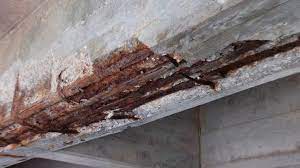Civil engineering is at the forefront of shaping our built environment, creating structures that stand as testaments to human ingenuity. Yet, the very materials used in these structures face challenges over time, especially in the face of environmental factors. Enter anti-carbonation coatings, a powerful tool in the arsenal of civil engineers. In this exploration, we unveil the transformative impact of anti-carbonation coatings in civil engineering, from bridges that span vast distances to buildings that define city skylines.
The Foundation: Understanding the Challenge of Carbonation
Concrete’s Vulnerability
Concrete, a fundamental material in civil engineering, is not immune to the forces of nature. Carbonation, a chemical process where carbon dioxide reacts with the alkaline compounds in concrete, poses a significant threat to the durability of structures. As concrete loses its alkalinity, the corrosion of embedded steel reinforcements becomes a pressing concern, leading to structural deterioration over time.
Environmental Factors and Structural Integrity
Civil engineering structures are exposed to a myriad of environmental factors, from varying temperatures to air pollution and moisture. These factors accelerate the process of carbonation, particularly in regions with harsh climates. To address this challenge, civil engineers turn to anti-carbonation coatings as a protective solution.
The Engineering Marvel: How Anti-Carbonation Coatings Work
Creating a Barrier Against Carbonation
The power of Anti Carbonation Coating lies in their ability to create a protective barrier on the surface of concrete structures. These coatings, often formulated with polymers, resins, and additives, form a resilient layer that acts as a shield against the infiltration of carbon dioxide. By impeding the penetration of carbon dioxide, these coatings interrupt the chemical reactions that lead to carbonation, preserving the alkalinity of the concrete and, consequently, its structural integrity.
Versatility in Formulation
Anti-carbonation coatings are versatile in formulation, allowing civil engineers to tailor their usage based on specific project requirements. Whether applied to bridges, tunnels, or high-rise buildings, these coatings offer adaptable solutions that cater to the unique environmental challenges each structure faces.
The Bridge to Durability: Anti-Carbonation Coatings in Bridge Construction
Critical Role in Bridge Preservation
Bridges, often exposed to the elements and varying weather conditions, are prime candidates for the application of anti-carbonation coatings. These coatings play a critical role in preserving the structural integrity of bridge components, including the concrete deck and steel reinforcements. The result is a bridge that withstands the challenges of weathering and time.
Longevity and Reduced Maintenance Costs
The application of anti-carbonation coatings contributes significantly to the longevity of bridges. By preventing the onset of carbonation-induced corrosion, these coatings reduce the need for frequent maintenance and repairs. The economic benefits are substantial, as the costs associated with bridge maintenance and downtime are minimized.
Reinforcing Skyscrapers: Anti-Carbonation Coatings in High-Rise Construction
Preserving Aesthetics and Structural Integrity
In high-rise construction, where buildings are not only functional structures but also architectural landmarks, the preservation of aesthetics is paramount. Anti-carbonation coatings serve a dual purpose by maintaining the appearance of the building’s exterior while ensuring the structural integrity of the concrete. This is particularly crucial in urban environments where pollution and environmental stressors are heightened.
Mitigating the Urban Heat Island Effect
High-rise buildings contribute to the urban heat island effect, where urban areas experience higher temperatures than their surrounding rural areas. Anti-carbonation coatings can be formulated with reflective properties, reducing the absorption of solar radiation and mitigating the heat island effect. This sustainability aspect aligns with the growing emphasis on eco-friendly construction practices in civil engineering.
Sustainable Infrastructure Development: The Role of Anti-Carbonation Coatings
Environmental Responsibility in Construction
Sustainability is a core consideration in modern civil engineering practices. Anti-carbonation coatings align with this ethos by contributing to the creation of sustainable infrastructure. The coatings reduce the environmental impact associated with maintenance activities and contribute to the overall longevity of structures, minimizing the need for resource-intensive reconstruction.
Resilience Against Climate Change
As the impacts of climate change become more pronounced, civil engineers face the challenge of creating structures that can withstand extreme weather events. Anti-carbonation coatings, by enhancing the durability of concrete, contribute to the resilience of infrastructure against the corrosive effects of climate-related factors such as increased temperatures and intense storms.
The Future Horizon: Advancements in Anti-Carbonation Coating Technologies
Innovations in Formulations
The future of anti-carbonation coatings in civil engineering lies in continual innovation. Researchers are exploring advanced formulations that offer improved durability, enhanced adhesion to various substrates, and eco-friendly alternatives. These innovations aim to further elevate the performance of anti-carbonation coatings in diverse construction scenarios.
Smart Coatings for Real-Time Monitoring
With the rise of smart infrastructure, there is potential for the development of anti-carbonation coatings embedded with sensors for real-time monitoring. These smart coatings could provide valuable data on the structural health of a building or bridge, enabling proactive maintenance measures and optimizing the lifespan of the structure.
Conclusion: Bridging the Gap to Sustainable Infrastructure
In the dynamic landscape of civil engineering, anti-carbonation coatings emerge as a catalyst for change, revolutionizing the approach to durability and maintenance. From the sprawling spans of bridges to the towering heights of skyscrapers, these coatings bridge the gap between engineering challenges and sustainable infrastructure development.
As civil engineers continue to grapple with the complexities of creating structures that can withstand the tests of time and environmental stressors, anti-carbonation coatings stand as a testament to innovation’s role in building a resilient and sustainable future. The term “anti-carbonation coating” is not just a technicality; it symbolizes a transformative tool that empowers civil engineers to push the boundaries of what’s possible, ensuring that the structures they build today endure for generations to come.


